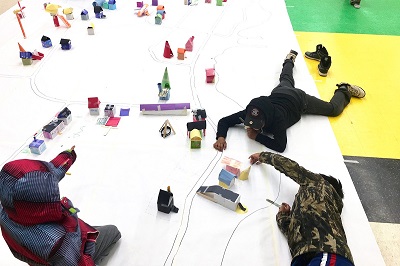 Friday, April 26, 2024
Friday, April 26, 2024  Friday, April 26, 2024
Friday, April 26, 2024 
As blogged on Ryerson.ca, a Ryerson professor and her team are spearheading collaboration efforts with several First Nations to create housing that is based on the community’s needs and takes into consideration factors like cultural practices and desired family groupings.
Shelagh McCartney, an architect and a professor at Ryerson’s School of Urban and Regional Planning and lead researcher of Ryerson’s Together Design Lab, partnered with First Nations in Northern Ontario to conduct extensive community consultations resulting in new designs and strategies for housing.
Professor McCartney believes that the design process and consultation should be integrated so that designers seek to thoroughly understand the needs of the residents. When the Together Design Lab team conducts community engagement, they aim to tap input from everyone involved, young and old, by finding a variety of ways to solicit opinions instead of just relying on one big public meeting. The team has designed tools and processes to create a consultation process that is fully inclusive.
In partnership with the Together Design Lab, a needs assessment and governance structure project has been completed with Nibinamik First Nation, Eabametoong First Nation is building homes this coming summer, and Nishnawbe Aski Nation is developing a housing strategy.
Professor McCartney has seen how the conversation changes when people realize their feedback actually matters to the design process.
“What we’re doing here is just really good design, the way I learned how to engage clients in the design process from my professors and mentors. Not engaging clients meaningfully removes their agency,” she said. “In the past, communities were not consulted on the types of homes they would be living in, as they were developed centrally by government agencies; and in recent times, money is not allocated to the design process, nor is the funding enough to build completed homes.”
These efforts seek to address previous flaws in the housing provided for residents on reserves by the government, designs that were based on suburban Canadian culture and ignored traditional First Nations’ family structures and culture. Problems have extended beyond physical issues with the homes, and in some places, they have created social issues.
Watch the video and learn more about Construction Links Network – the peer-to-peer network sharing platform for the construction, building and design community.
Ideal for YOUR Press Releases | Project Updates | New Appointments | Awards & Milestones | Company News | New Products/Services | Brochures | Videos | Infographics | Blog Sharing | Events and More